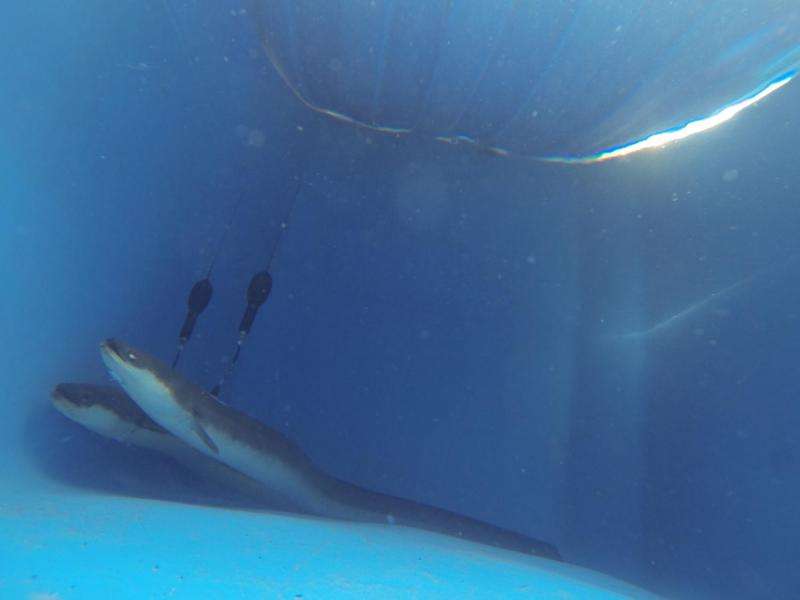100-year-old mystery solved: Adult eel observed for the first time in the Sargasso Sea

After more than a century of speculation, researchers have finally proved that American eels really do migrate to the Sargasso Sea to reproduce. A team supervised by Professor Julian Dodson of Université Laval and Martin Castonguay of Fisheries and Oceans Canada reports having established the migratory route of this species by tracking 28 eels fitted with satellite transmitters. One of these fish reached the northern boundary of the Sargasso Sea, the presumed reproduction site for the species, after a 2,400 km journey. Details are published in the latest edition of Nature Communications.
The discovery puts an end to more than a hundred years of conjecture regarding the migratory route and location of the only American eel reproduction site. "Eel larvae have been observed in the Sargasso Sea since 1904, suggesting that the species reproduced in this area, but no adult eels had ever been observed in this part of the Atlantic Ocean," explained Professor Dodson of the Faculty of Science and Engineering at Université Laval.
The many expeditions aimed at catching eels in their mysterious gathering site have all failed, but the recent development of sophisticated satellite transmitters opened up new opportunities for researchers. Julian Dodson and his team affixed these transmitters to 22 eels captured in Nova Scotia and 16 from the St. Lawrence Estuary. In the ensuing weeks, 28 of these transmitters resurfaced in different areas of the Atlantic and transmitted the data they had recorded.
Analysis of the data revealed that all the eels adopted similar migratory paths and patterns. Near the coastline they appear to use the salinity level and temperature to find the high seas. A single eel provided data for the ocean segment of the migration. Its transmitter showed that it turned due south upon reaching the edge of the continental shelf, and headed straight to the Sargasso Sea. In 45 days, this eel captured in the province of Quebec covered 2400 km. "This points to the existence of a navigation mechanism probably based on magnetic field detection," asserted Professor Dodson.
Julian Dodson remains cautious about drawing premature conclusions from some thirty eels, only one of which travelled the full migratory route. "Our data nonetheless shows that the eels don't follow the coastline the whole way, they can cover the route in just weeks, and they do go to the Sargasso Sea. We knew that millions of American eels migrated to reproduce, but no one had yet observed adults in the open ocean or the Sargasso Sea. For a scientist this was a fascinating mystery."
More information: Nature Communications, DOI: 10.1038/ncomms9705
Journal information: Nature Communications
Provided by Laval University




















